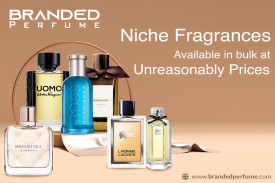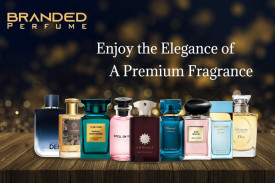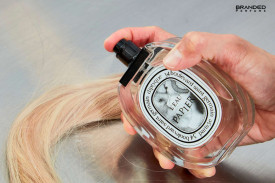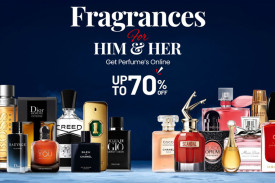Once upon a time, a splash of color transformed the ordinary to extraordinary, narrating one's unique style journey. It is a proven fact that hair color can influence mood and confidence, elevating personal image. With technology advancing in hair cosmetics, achieving a vibrant, lasting shade is no longer a fleeting fantasy but an accessible reality.
The Color Wheel of Hair
In the realm of hair hues, the color wheel stands as a cornerstone of vibrancy, guiding the selection of shades that complement and amplify individual complexions. Mastering this wheel enables an insightful approach to creating balance and harmony within diverse hair palettes, unlocking a spectrum that resonates with personal style.
Understanding the color wheel leads to nuanced color creation, akin to a "chromatic symphony". A strategic play of undertones and temperatures—cool versus warm—can make a significant impact on the final look. At its core, the clever manipulation of the color wheel can steer the journey of hair color transformation, allowing each shade to unfold in its full aesthetic potential.
Decoding Hair Dye Spectrum
Understanding the hair dye spectrum is pivotal—in essence, a veritable lexicon of color possibilities at your fingertips.
Permanent hair color penetrates the cortex, altering the natural pigment, whereas semi-permanent dyes coat the cuticle.
By grasping the varying types of hair dyes available, one can make an informed decision on temporary transformations or long-term color commitments, ensuring customer satisfaction.
Choosing the correct hue involves an intricate understanding of the hair's underlying pigment and the desired shade outcome, harmonizing to create the perfect aesthetic blend.
Complementary Colors for Skin Tone
Selecting a hair color that complements the skin tone is pivotal for achieving a harmonious, flattering appearance. It transcends mere fashion, venturing into the realm of aesthetic compatibility. A careful analysis of skin undertones—be it cool, warm, or neutral—is essential for this synergy.
Cooler skin tones are typically enhanced by hair shades with blue or violet-based undertones. Conversely, warmer skin tones glow with hues that have golden or red undertones.
Understanding the relationship between skin undertone and hair color is crucial; it's akin to pairing the right accessories with an outfit. The aim is to frame the face and accentuate its features, not to overwhelm it with a mismatched palette. Colors must be selected to enrich the natural skin tone, often by opposing it on the color wheel for maximum impact.
In the pursuit of selecting the most complimentary hair shades for your clientele, consider the psychological impact of color as well. Color choices should not only complement the skin tone but also align with the individual's style and confidence levels. The ultimate goal is elevating their natural beauty through strategic color placement, something that is as much a science as it is an art. For instance, a subtle balayage can provide a lift to the complexion, while a bold, vibrant shade may convey dynamism and personality.
Hair Shade Maintenance
To sustain the luminosity and vibrance of colored hair, it is imperative to integrate a targeted care regimen. This should include the use of color-safe shampoos, conditioners, and periodic deep-conditioning treatments. Furthermore, protecting the hair from harsh environmental aggressors such as UV rays and chlorine is crucial to prevent color fading and maintain hair integrity.
It's advised to schedule regular salon visits for color-refresh sessions and to avoid over-washing which can expedite color loss. Additionally, hair health can be preserved with the judicious use of heat styling tools and the application of thermal protectant products.
Protecting Color Vigor
Maintaining color vibrance is not merely complementary; it's imperative. To prevent premature fading, one must adopt a stringent hair care protocol that shields against the ubiquitous environmental factors that threaten to dull a lively hair color.
The ultraviolet rays of the sun are notorious for sapping the strength of your hair's hue. Hence, incorporating UV-protective hair products into your daily routine becomes essential. Additionally, headgear like hats and scarves can serve as physical barriers, providing further protection from solar exposure.
Chlorinated water is another adversary in the battle to preserve hair color. A pre-emptive measure is to drench hair in fresh water before swimming, reducing the amount of chlorinated water absorbed. After exposure, washing with specially formulated shampoos that remove chlorine and mineral build-up is crucial.
The importance of a tailored hair care regimen cannot be overstated. For colored hair, this means using products specifically designed to lock in color and repair damage. Look for shampoos and conditioners infused with antioxidants and free-radical fighting ingredients to ensure your hair remains as vibrant as the day it was colored.
Embracing these protective strategies will significantly extend the life of your hair color. Retailers must provide solutions that assure customers their investment in hair color is protected and their hair remains a brilliant testament to their personal style.
Home Care Regimen
Ensuring the longevity of stunning hair shades goes beyond the salon chair—it’s about daily vigilance and a meticulous home care regimen. Utilizing color-safe shampoos and conditioners is paramount to maintaining vibrancy and preventing fade.
Weekly deep conditioning treatments are non-negotiable for color-treated hair. These penetrate the hair shaft to repair and seal in color.
The importance of heat protection cannot be understated; always apply a heat protectant before using styling tools. This acts as a shield, mitigating the damage caused by high temperatures which can rapidly deteriorate hair color and integrity.
Lastly, incorporating leave-in treatments and hair oils into your regimen provides continuous protection and hydration. These products can form a defensive layer against environmental aggressors, including UV rays and pollution, which are detrimental to color retention and hair health. Consistent use can result in a perceptible enhancement of hair vibrance and luster, positioning your offerings as indispensable in the eyes of discerning consumers.
Application Techniques Unwrapped
Accurate partitioning and sectioning of hair is essential to achieving uniform color distribution. It ensures saturation across every strand, particularly when addressing regrowth areas or transitioning to a lighter shade. Mastery of this technique translates to a flawless finish.
For the best results, employ the use of professional grade tint brushes and bowls, ensuring precision in application and minimizing wastage. Consistency in product mixture and timing is key to repeatable excellence in hair color outcomes.
DIY vs. Professional Dyeing
Selecting between DIY and professional hair dyeing hinges on factors such as desired outcome, skill level, and budget considerations.
- Cost Efficiency: DIY dyeing may reduce immediate expenditure but can incur long-term costs if correction is required.
- Convenience: Managing the dyeing process at home offers flexibility but lacks the professional touch.
- Color Accuracy: Color matching is challenging; professionals ensure an exacting shade.
- Customization: Salons provide custom color formulas that are otherwise inaccessible.
- Conditioning: Professional applications often come with post-color treatments for hair health.
- Corrective Measures: Mishaps in DIY often necessitate professional intervention.
Opting for a salon visit promises expertise and typically yields superior results in hair vibrancy and health.
Yet, the intimate knowledge of one's hair gained through DIY experiments can be invaluable.
Sectioning for Even Results
To achieve uniform color saturation, precise sectioning of hair is paramount before dye application.
- Divide hair into four quadrants: from the forehead to the nape and ear to ear.
- Secure each section with clips, ensuring no strands are tangled.
- Apply dye systematically, quadrant by quadrant, to prevent patchiness.
- Use a tail comb for neat and accurate sectioning.
Conscientious sectioning leads to a cohesive look and overall better dyeing experience.
Meticulous attention to sectioning limits the risk of uneven tones, a telltale sign of amateur dye jobs.
Trendsetting Hair Colors
In the dynamic world of beauty, staying abreast of the latest hair color trends is pivotal for capturing clientele. Subtle pastels, rich brunettes, and bold face-framing highlights are setting the tone.
Experts forecast a surge in interest for unique metallic shades and multifaceted jewel tones, standing as a testament to individuality. These color choices push boundaries while remaining sophisticated, often requiring the deft touch of professional formulation.
Embracing "ultra-personalization" and "hyper-customization" are key in delivering on customers' desires for distinctiveness, making your offering vital in a competitive market.
Seasonal Shade Shifts
As seasons transition, so do hair color preferences, often reflecting the changing environment.
- Spring Flourish: Opt for softer, warmer tones reminiscent of blooming flowers.
- Summer Glow: Bright, bold shades mirror the vibrancy of the season.
- Autumn Warmth: Transition to richer, deeper colors that echo the fall palette.
- Winter Hues: Cooler tones and icy highlights align with crisp winter landscapes.
This evolution requires adaptability in inventory and expertise in color forecasting.
Staying current with seasonal trends not only attracts a diverse clientele but also positions your retail as a dynamic beauty destination.
Bold & Bespoke Tinting
The allure of individuality is most expressively captured in hair, where color becomes a canvas for personal artistry, ensuring a distinctive and memorable impact.
Select tints that resonate with personality, mirroring inner vibrancy and unique flair.
Innovative application techniques, such as balayage (hand-painting hair for natural, sun-kissed highlights) and ombre, diversify the tinting portfolio.
Mastery over color mixing and matching is essential in crafting shades that complement complexion, eye color, and personal style expectations.
Guide clients through a spectrum of possibilities, from neon exuberance to pastel subtleties, painting a picture of the statement they can make with their hair color choice.
Ultimately, it's about aligning consumer's desires with artistic vision. Cultivate exclusive color blending abilities to forge standout hair experiences.









